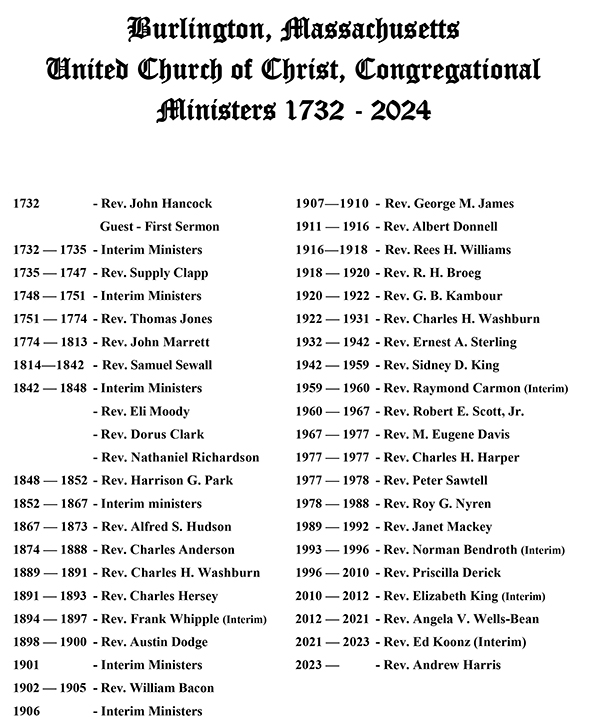Our History
The early history of our church and the history of Burlington are one and the same. Indeed: it is not an exaggeration to say the town of Burlington was formed around our church.
In the 1600s the Massachusetts Bay Colony was founded by those who firmly believe that there should be no separation of church and state. These Puritans created a deeply religious, socially tight-knit, and politically innovative culture that is still present within the modern United States. Church attendance in early Massachusetts Bay was compulsory.
We can trace the town’s beginnings, our Church’s beginnings, back to when the Wyman brothers, John and Francis were part of the settlement of the area called Shawshin, which bordered the Shawshin (now Shawsheen) River, in the 1650s. Shawshin would be divided between the present day town of Billerica and the Northwest corner of Woburn, present day Burlington.
Church attendance was mandated by law with each person attending, and taxed for the support of, their community church, and it was several miles to the meetinghouse in Woburn. This was a real hardship for those living in, what was then, the wilderness.
In 1725 the people of the Shawshin section of Woburn began petitioning the Great and General Court of Massachusetts Bay to allow them to establish their own parish. At last on September 27, 1730, approval was finally granted and Shawshin was designated as the Second Parish of Woburn. The first services were held at the home of Simon Thompson in the center of the new Parish, as the residents began preparation to build their own Meetinghouse. Benjamin Johnson generously gave them a half acre of land on a location known as Forest Field Hill. On July 23, 1732, the Meetinghouse was raised.
As described by Ed Fogelberg in Burlington - Part of a Greater Chronicle:
"It was a very plain, almost square building, fifty feet long, forty feet wide, and twenty-three feet from sill to plate. .... It was not wholly completed for several years but was put to use at once.
The building had no steeple and no bell to call parishioners to worship. The windows were casements with diamond-shaped panes set in sashes of lead. Square panes in double hung sashes were installed in 1794. There were no pews at first, only long wooden benches on either side of an aisle which separated the women who sat to the East from the men who sat to the West.
Our Ministers

In 1732 Rev. John Hancock gave the first sermon at our church. This is a list of our Ministers since that time.
A Timeline of the Meetinghouse and Church


 Open & Affirming
Open & Affirming